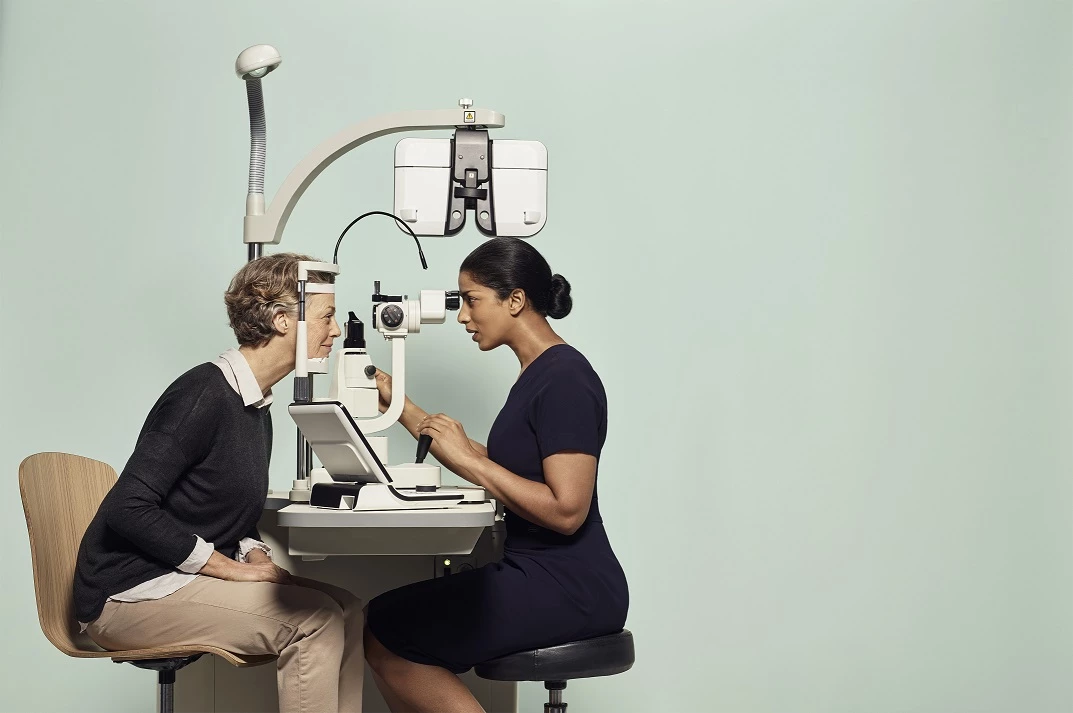
Partner Article
Migraine in the workplace – how eye care can help. Migraine Awareness Week: 2 to 8 September 2018.
Migraine is the third most common disease in the world, affecting an estimated one in seven people globally1. Migraine Awareness Week aims to raise awareness of the condition and this year focusses on the impact of migraines in the workplace.
The Migraine Trust is asking employers to consider making reasonable adjustments for employees who suffer from migraines. These may include flexible working practices and adapting the physical environment to help prevent the triggering of a migraine. Prolonged use of display screen equipment is a known trigger for migraines. Specsavers Corporate Eyecare looks at how migraines could affect your employees’ vision and what employers can do to help:
Ocular migraine Ocular migraines, sometimes referred to as retinal migraines, are temporary visual disturbances. Typical symptoms may include temporary loss of vision in one or both eyes, blurred vision, flashing lights, blind spots, or loss of peripheral vision. These symptoms may or may not be accompanied by a headache. Vision loss usually lasts to around 15 to 20 minutes, before normal vision gradually starts to return.
Taking action If you suspect that you are suffering from a migraine that is accompanied by vision disturbances, the best course of action is to rest the eyes until symptoms subside and the vision returns to normal.
Dr Nigel Best, senior optometrist and clinical spokesperson for Specsavers Corporate Eyecare, said: ‘The symptoms commonly associated with ocular migraines can mimic symptoms associated with more serious retinal conditions, for example a retinal detachment. For that reason, it is important that if you experience these symptoms you should have your eyes examined urgently. This will allow your optometrist to rule out any eye condition that may be responsible. If your optometrist concludes that your symptoms are migrainous they can write to your GP who can discuss the most appropriate treatment options. Your optometrist may also be able to give tailored advice to the individual on how best to manage the particular symptoms from which they suffer.’
Wider risks Research suggest that migraines double the risk of the most common type of stroke, where the artery supplying the brain is blocked by a clot.2 This is recognised by The British Heart Foundation, where evidence is also discussed regarding the link between migraine and heart disease.
‘An eye examination in itself can help with the detection of risk factors for cardiovascular disease such as high blood pressure and diabetes,’ said Dr Best. ‘It is possible for the optometrist to view the small blood vessels at the back of the eye in which changes may indicate such conditions. This is a further reason to visit an optician if suffering from migraines.’
What can employers do? The simple option for employers is to implement an eye care policy that provides an eye test for all employees. Dr Best said: ‘The Display Screen Equipment (DSE) regulations oblige employers to provide all screen users with eye care. It is likely, therefore, that employers are already providing access to the necessary preventative eye care, it may just be a case of communicating the benefits more widely, and Migraine Awareness Week provides the perfect opportunity.’
This was posted in Bdaily's Members' News section by Specsavers Corporate Eyecare .
Enjoy the read? Get Bdaily delivered.
Sign up to receive our popular morning National email for free.








 Keeping it reel: Creating video in an authenticity era
Keeping it reel: Creating video in an authenticity era
 Budget: Creating a more vibrant market economy
Budget: Creating a more vibrant market economy
 Celebrating excellence and community support
Celebrating excellence and community support
 The value of nurturing homegrown innovation
The value of nurturing homegrown innovation
 A dynamic, fair and innovative economy
A dynamic, fair and innovative economy
 Navigating the property investment market
Navigating the property investment market
 Have stock markets peaked? Tune out the noise
Have stock markets peaked? Tune out the noise
 Will the Employment Rights Bill cost too much?
Will the Employment Rights Bill cost too much?
 A game-changing move for digital-first innovators
A game-changing move for digital-first innovators
 Confidence the missing ingredient for growth
Confidence the missing ingredient for growth
 Global event supercharges North East screen sector
Global event supercharges North East screen sector
 Is construction critical to Government growth plan?
Is construction critical to Government growth plan?